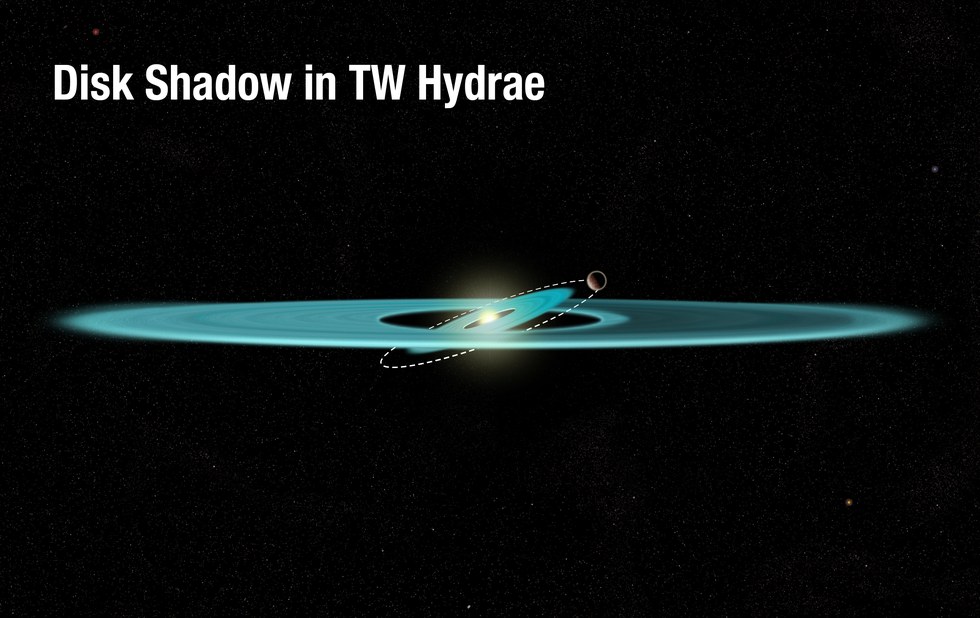The research team noticed the shadow after analyzing 18 years' worth of observations of TW Hydrae, which is about 8 million years old and lies 192 light-years from Earth, in the constellation Hydra. The images, taken by NASA's Hubble Space Telescope, showed that the shadow rotates around the 41-billion-mile-wide (66 billion kilometers) disk once every 16 years.
"This is the very first disk where we have so many images over such a long period of time, therefore allowing us to see this interesting effect," study lead author John Debes, of the Space Telescope Science Institute in Baltimore, said in a statement. "That gives us hope that this shadow phenomenon may be fairly common in young stellar systems."
An unseen exoplanet is the best explanation for the shadow, Debes and his colleagues said. If they're right, the alien world itself isn't casting the shadow; rather, the planet's gravity has twisted and tilted the inner portion of the dust-and-gas disk, blocking starlight headed toward the outer reaches.
 |
| This diagram reveals the proposed structure of a gas-and-dust disk surrounding the nearby young star TW Hydrae |
The putative planet must be about five times more massive than Jupiter to sculpt the inner disk in this manner, the researchers added.
The results — which Debes presented Saturday (Jan. 7) at the 229th meeting of the American Astronomical Society in Grapevine, Texas — map out a promising new way to hunt for infant planets in the inner portions of the disks surrounding young stars, study team members said.
Read more at Discovery News

No comments:
Post a Comment